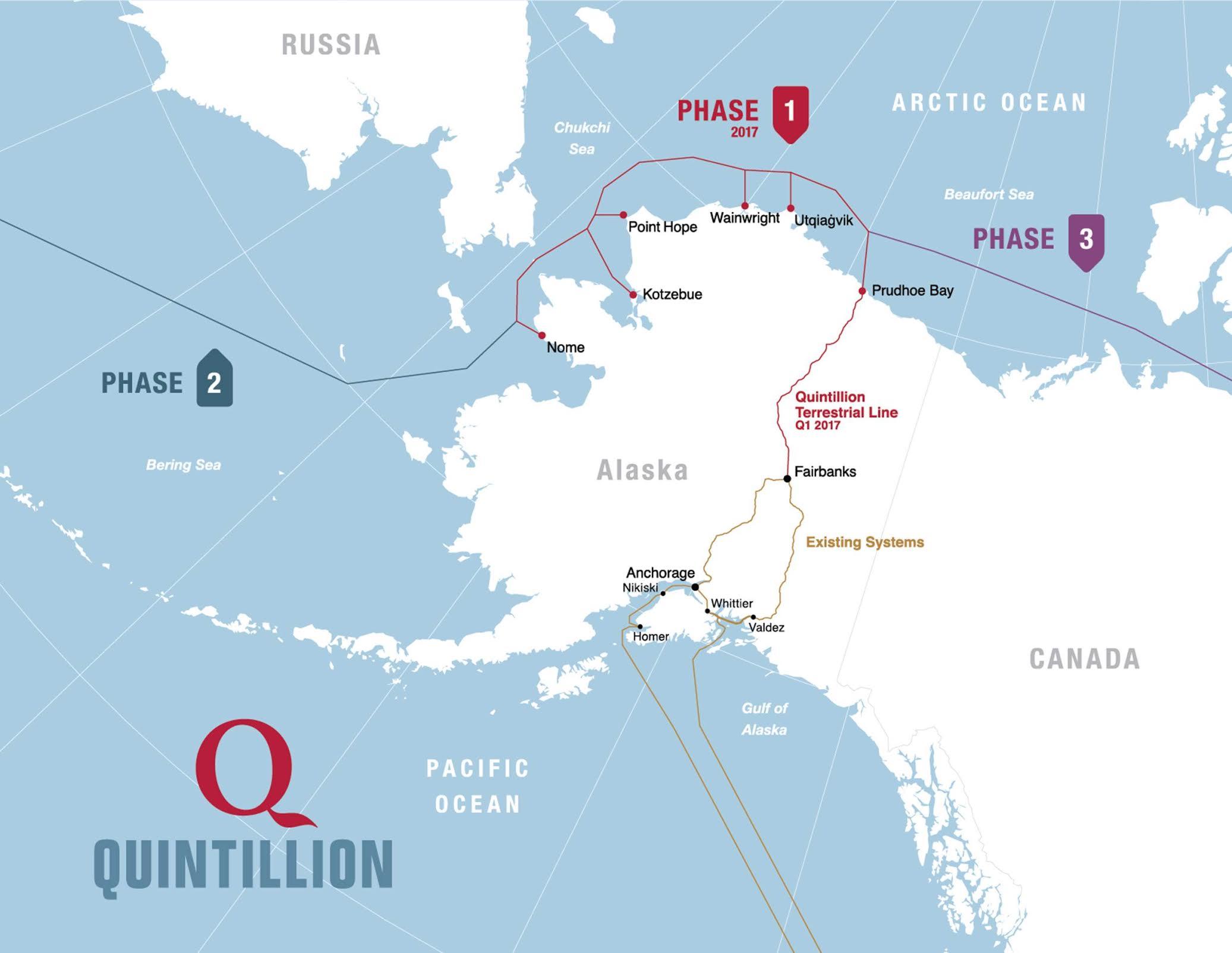
Residents of five North Slope communities will soon have access to much faster internet connections, now that Anchorage-based Quintillion has activated its new land- and sea-based fiber-optic cable network. Company officials say the Alaska system is the first part of a network that could eventually stretch from Europe to Asia, with Alaska at the midpoint.
Quintillion activated its 1,200-mile terrestrial fiber-optic cable system on Friday, giving residents of five North Slope communities a quantum leap forward in broadband internet access.
“It’s a pretty phenomenal capacity – really unlimited for the purposes of the communities that we will be connecting,” Quintillion spokeswoman Kristina Woolston said.
Nome, Kotzebue, Point Hope, Wainwright and Utqiagvik all will soon have access to the internet through the system. Woolston says its overall capacity is 30 terabits per second – which, to most users, could perhaps be best described in terms of the number of high-def movies that could be downloaded through it, quickly.
“Millions of high-definition movies downloaded in a second,” Woolston said in an interview Friday.
Woolston says the communities each will have access to up to 200 gigabits of data per second. That’s many times faster than the satellite-based system that North Slope internet service providers have been using for the past several years.
“Based upon the demand and the need, that could increase,” Woolston said. “Certainly, the capacity on the system overall is there.”
And it’ll be much more dependable than the slow and often balky connections satellite-based systems afford, according to the head of ASTAC, the North Slope’s biggest internet service provider.
“So, instead of going 23,000 miles into outer space, to a satellite, and then 23,000 miles back to an Earth station, and then hand-off in Anchorage to the internet connection, it’s now happening at the speed of light over this fiber,” ASTAC CEO Jens Laipenieks said.
Laipenieks said that will cut the time it takes to transmit data from a server to a computer, the so-called latency, by more than 90 percent, down from 900 milliseconds to about 60 milliseconds.
“So that means things load faster, your web pages are more responsive, your videos don’t buffer or skip,” Laipenieks said. “Y’know, the overall quality of the bandwidth quality is vastly superior.”
Laipenieks says the company has been laying fiber-optic to the home of all of its 1,100 customers in the five communities over the past couple of years and making other system upgrades in preparation of the Quintillion fiber becoming operational. He says the company’s 1,100 customers have been looking forward to this day even more.
“We’ve been taking pre-orders now for a few weeks,” Lapienieks said. “So, Wednesday Dec. 13th is kind of our go-live day for our new product.”
Laipenieks said ASTAC is now studying how to extend its system farther eastward to other North Slope communities that are still stuck will satellite-based internet connections.
“We’re turning our sights on extending the network from these new Quintillion landing sites to the final four, as we refer to them, which are, starting from the east, the village of Kaktovik; Atqusuk, south of Barrow; Point Lay and Anaktuvik Pass.”
Woolston says the Alaska terrestrial system links into a larger internet lines that originate in the Pacific Northwest and lands at several points in Southcentral and the Kenai. Quintillion officials plan to lay another 10,000 miles of subsea fiber-optic cable from the landing in Nome westward to Tokyo, and from Prudhoe Bay eastward to London.
Tim Ellis is a reporter at KUAC in Fairbanks.




